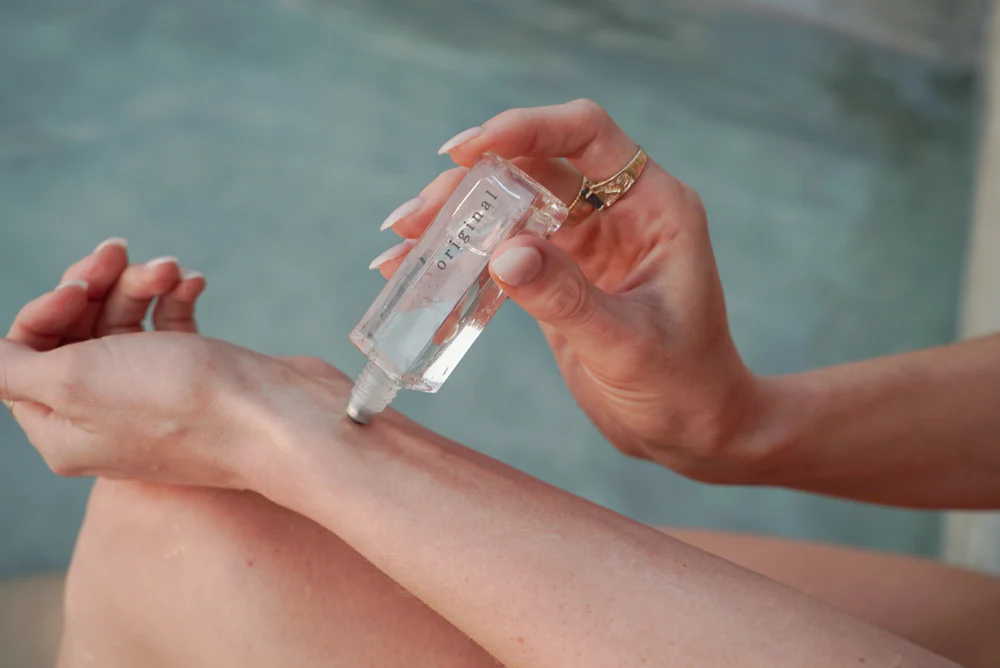.png)
Continuous Conversion Optimization
Landing Page Strategy, Design & Optimization
"Since working with SplitBase we've seen significant improvements across every metric, including AOV and conversion rate. We also appreciate the rapid turnaround in communication for ad hoc help with any conversion and site-related issues that come up"

Additional Revenue Generated
Significantly Increased
Reduced
From day 1, Moon Pod's reinvented bean bag was an instant hit. Filled with responsive high-density beads, Moon Pod mimics the sensations of Flotation Therapy, which has been known to help reduce stress and anxiety. The DTC brand has since increased its product offering, and has seen impressive growth over the past few years.
With SplitBase, Moon Pod has been able to launch a variety of high-performing landing pages for their top performing traffic channels, and continuously optimize their site to increase AOV and conversion rate. So far, SplitBase's optimization program for Moon Pod has generated an estimated $3.3M in annualized returns.
Moon Pod approached SplitBase to help them get the most out of their investment in paid ads. They knew their website wasn’t as optimized as it could be, and they wanted to try new landing page ideas to help them improve performance.
Their in-house team was also too small for the strategy, design, development, and analytics workload required to do conversion optimization at the scale they needed to move the needle. They didn’t have the time nor the people required to make it happen, so they needed a partner they could trust and collaborate with to manage the entire landing page building, and continuous site experimentation process. They chose SplitBase after receiving multiple recommendations from similar DTC brands.
As we started working together, our team at SplitBase put into action our conversion research process, as we do with every project, to understand the top optimization opportunities.

The qualitative and quantitative research process involved:
Thanks to our initial conversion research process, we were able to bring the data to the table and start ideating in collaboration with their team. The goal? Create a data-driven roadmap of on-site AB tests and landing pages to support paid media campaigns.
Based on the conversion research, we established 3 priorities for the on-site experimentation roadmap:
With multiple accessories, and possible bundles, we identified that increasing the focus on upsells and bundles would have a high chance of generating big returns for the brand.
Through multiple experiments, we added and tested cart and checkout cross-sells. The results were nearly instant and generated an additional 5 figures per month. We then continued to test product combinations and cross-sell conditions to further maximize their impact.

We also got creative with bundles and worked with Moon Pod’s team to create brand new bundles based on existing purchasing behaviors. On the product pages, we extensively tested different ways to display product options, bundles, and upsells, which also proved to be quite profitable.
No matter the product, no matter the industry, if customers can’t find the answer to one of their questions, it’ll create friction. People don’t buy when they have doubts.
Naturally, when we have a product like Moon Pod, which retails for a couple of hundred dollars, and is a relatively large item, customers will have questions about the product itself, shipping, returns, and so on.
Identifying what’s missing from the product pages, and which information isn’t clear to customers, was key to removing some barriers that prevented people from buying. Thanks to our qualitative research process, we were able to identify people’s biggest questions and thus were able to form hypotheses as to how we could address those throughout the website.

Some changes were implemented immediately to improve clarity, while more complex questions that could be addressed in multiple ways were tested.
Moon Pod's main product is a modernized bean bag. It's lighter, smaller, better looking and more comfortable than competitors. Existing customers will say that when sitting on a Moon Pod, you “feel like you’re floating”.
Selling a piece of furniture, and especially, comfort, can be quite challenging through ecommerce as customers don’t get to try and feel the product. They can’t really compare its comfort with competitors’ products either. So, how do you sell comfort, and a feeling of floating, through a simple website?
Being one of the main challenges we faced, we came up with a roadmap of A/B test ideas that were specifically tailored to help us better understand customers’ reactions to different types of messaging, words, and marketing angles.

Did people care more about its design and size, its “feeling of floating”, how it can be used, or the benefits people would get by using it?
Those tests became instrumental in the success of the program, whether the tests would win, or lose, as they revealed exactly what motivated, or did not motivate, customers to make a purchase. The insights provided by those tests enabled us to create landing pages and another experimentation roadmap that emotionally and logically resonated with potential customers.
In addition to on-site changes and experiments, we strategized, wrote, designed, and built multiple landing pages based on the insights from both the conversion research, and from on-site test results.
The goal of those landing pages has been to help the brand maximize returns from paid social efforts.
We built and tested many formats, from “Hero-style” pages, to “advertorial-style”, content-heavy landers. Some were built specifically for Facebook ads, some for Google ads, and the strategy varied whether incoming traffic came from prospecting or retargeting campaigns.

Amongst the landing pages built the advertorial-style page above was meant to highlight some of the top pieces of insight gathered from customers.
The landing pages built part of this program successfully became an instrumental part of Moon Pod’s customer acquisition strategy by increasing conversion rate, AOV, and significantly reducing customer acquisition costs.
Increase your conversions and AOV too.
Request a free proposal.

Ancestral Supplements needed to level up paid social performance, and our landing page optimization program did just that.

Riddle Oil was experiencing rapid growth and investing significantly in paid media acquisition, but their website wasn't keeping pace with their ambitions. This new website helped them hit their goals and added 7 figured in revenue.